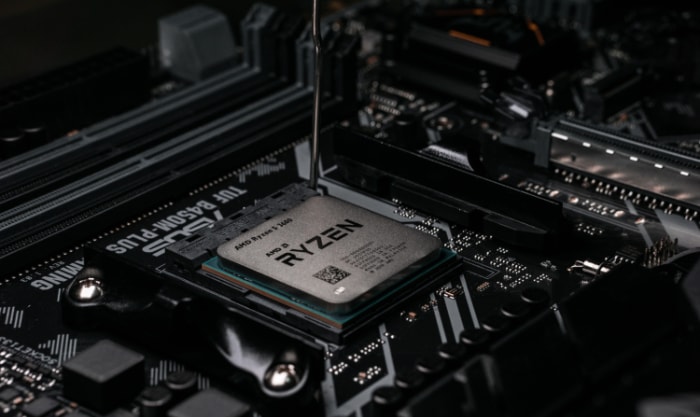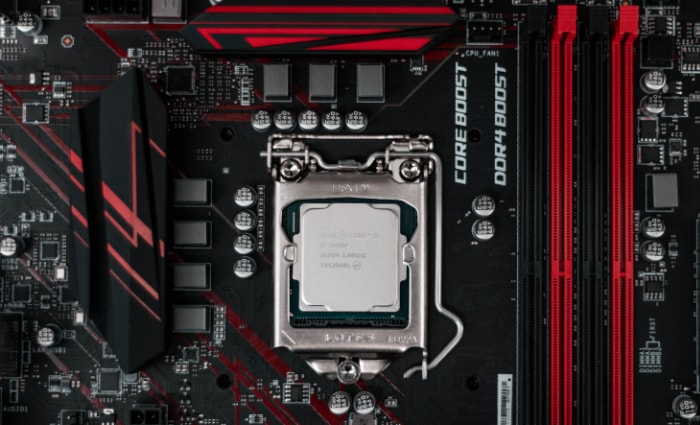How To Tell If Your CPU Is Dead: A Diagnostic Blueprint

When your computer behaves erratically or refuses to boot altogether, the central processing unit (CPU) could be the culprit. As the ‘brain' of your computer system, the CPU carries out the instructions of a computer program, performing the basic arithmetical, logical, and input/output operations.
While CPUs are engineered for durability and longevity, they are not impervious to failure. Being able to diagnose a dead or failing CPU accurately is crucial, as misdiagnosis could lead to unnecessary expenses and lost time.
Recognizing Signs of CPU Failure
The central processing unit is a vital component that orchestrates the functioning of your computer system. When it starts to fail or dies, the symptoms can be quite conspicuous.
While a malfunctioning CPU can cause a wide range of issues, certain warning signs are more directly indicative of a failing CPU. Knowing these signs helps you take immediate action, which may prevent further damage and unnecessary costs.
System Instability or Frequent Crashes
A hallmark of a failing CPU is the increasing instability of your system. You might experience abrupt shutdowns, random reboots, or the dreaded Blue Screen of Death (BSOD) on Windows systems.
While these issues can also be caused by software conflicts or other hardware failures, consistent system instability often suggests a problem with the CPU.
Failure to Boot
A dead or failing CPU may prevent the system from initiating the boot sequence. In such cases, you may hear your computer's fans spinning and see lights on the motherboard, but the system will not complete the boot process.
A complete failure to boot—accompanied by no beeps or error messages—is a strong indicator that your CPU may be dead.
Overheating Issues
CPUs come with built-in thermal protection mechanisms that shut down the system or throttle performance when they get too hot. If you find that your system is shutting down unexpectedly after a short period of use, it might be due to CPU overheating. This is often confirmed by touching the CPU heatsink, which would be unusually hot.
Error Messages Related to CPU
Certain operating systems and BIOS setups will explicitly notify you if a CPU is failing. Messages such as “CPU Over Temperature Error” or “CPU Fan Error” can appear either as a pop-up notification within the operating system or as an error message during boot-up.
While these messages are not definitive proof of CPU failure, they are strong indicators that should not be ignored.
Unusual System Behavior
Another warning sign is odd system behavior that cannot be attributed to software issues. Examples include programs that run sluggishly, files that become corrupt for no apparent reason, and graphical artifacts appearing on your screen.
These symptoms can sometimes be traced back to a failing CPU, particularly if other components have been ruled out as the cause.
Preliminary Checks
Before zeroing in on the CPU as the source of your problems, it's essential to rule out other potential culprits. Various components in your system could mimic symptoms of CPU failure, leading to a misleading diagnosis.
Power Supply Issues
A faulty power supply unit (PSU) can lead to problems that resemble CPU failure. If your computer isn't turning on or is shutting down randomly, inspect the power supply for any signs of failure.
Listen for unusual noises, check for any burnt smell, and consider swapping it out for a known working PSU to see if the issues are resolved.
RAM Failure
Memory problems can result in similar symptoms to CPU failure, such as system crashes or failure to boot. To rule this out, you can use memory diagnostic tools or manually remove and reseat the RAM modules.
In some instances, swapping the RAM modules with known working units can help identify if the memory is the issue.
Disk Drive Errors
A failing hard drive or solid-state drive can also cause system instability or boot failures. Check for clicking noises or sluggish read-write speeds as early signs of a failing disk drive.
Running disk-checking utilities can also offer insights into the health of your drives.
Motherboard Issues
Sometimes, the issue lies with the motherboard itself. Look for visible damage like burnt areas, leaking capacitors, or broken pins in the CPU socket.
Additionally, motherboards have their own set of POST (Power-On Self-Test) codes or lights that can indicate issues including CPU failure. Consulting your motherboard’s manual can provide specifics on what each code or light means.
Cooling System Failure
Lastly, issues with your cooling system can also lead to symptoms that resemble those of a failing CPU. Ensure your fans are spinning as they should, and that your heatsinks are properly seated.
If your CPU is overheating, it may not necessarily be the CPU's fault; the cooling system could be inadequate or failing.
Physical Inspection

After performing preliminary checks and ruling out other components, the next step is to visually inspect the CPU for signs of damage. A physical examination can offer valuable insights into the condition of the CPU and may provide visual confirmation of a failure.
Unplugging the System
First and foremost, make sure to turn off the computer and unplug it from the electrical outlet. This eliminates the risk of electrical shock and minimizes the potential for further damage to the CPU or other components.
Once the system is powered down, you may open the computer case, usually by removing the side panel.
Removing the Heatsink and Fan
The CPU is generally covered by a heatsink and fan assembly, which you'll need to remove for a closer inspection. Take note of how the heatsink is attached to the motherboard, as you'll need to reattach it later.
Use appropriate tools to carefully detach the heatsink, taking care not to exert too much force that could damage the CPU or motherboard.
Visual Inspection
With the heatsink removed, the CPU is now exposed for inspection. Look for visible signs of damage such as burns, discoloration, or broken pins.
These indicators could signify a dead CPU. Even minor physical damage can render the CPU inoperative, so be thorough in your examination.
Checking Thermal Paste
While you're at it, examine the thermal paste between the CPU and heatsink. If the thermal paste is excessively dry or there's too little or too much of it, it could lead to overheating issues.
The quality and quantity of thermal paste are crucial for optimal heat dissipation.
CPU Socket Inspection
Lastly, inspect the CPU socket on the motherboard for any bent or broken pins, as well as burns or other damages. A damaged socket can cause the CPU to malfunction and could potentially affect other components.
Therefore, it's essential to ensure the socket is in good condition.
The POST (Power-On Self-Test) Method
If your system shows no overt signs of CPU damage but is still failing to boot or function properly, utilizing the POST method can provide further clues. POST is a diagnostic process that occurs when you start up your computer.
It checks the hardware components and ensures that everything is functioning as it should before the operating system kicks in. Understanding how to interpret POST signals can help you confirm or rule out CPU failure.
What is POST?
POST stands for Power-On Self-Test. When you power on your computer, the BIOS (Basic Input/Output System) or UEFI (Unified Extensible Firmware Interface) initiates a series of tests on your hardware components, including the CPU, RAM, and storage devices.
The outcome of these tests is usually communicated through beep codes or LED indicators on the motherboard.
Running a POST Check
To perform a POST check, you'll first need to power down your system and unplug it. Open the case and locate the system speaker, which is often connected directly to the motherboard.
If your motherboard has built-in POST LED indicators, make sure they are visible. Power up the system and listen for beep codes or watch the LED indicators.
Interpreting POST Beep Codes or LED Indicators
Different motherboards have different POST beep codes or LED color patterns. Refer to your motherboard’s manual to interpret what each signal means.
A single short beep usually indicates that everything is in order, while a series of long or short beeps could signify various hardware issues, including CPU failure.
Limitations of POST Diagnosis
While POST is a reliable method to test basic hardware functionality, it has its limitations. It won't catch more nuanced issues, such as slight overheating or sporadic system crashes.
Therefore, if your POST signals indicate no problems, you may still need to investigate further to rule out CPU failure conclusively.
Isolation Testing
If you've made it this far without a definitive diagnosis, isolation testing becomes the next logical step. This method involves separating the CPU from the surrounding components to verify its functionality in a controlled environment.
Isolation testing minimizes variables and makes it easier to pinpoint whether the CPU is truly the root of your system's issues.
Preparing for Isolation Testing
Before you begin, you'll need another working computer that is compatible with the CPU you are testing. This could be a friend's computer, a spare system at your workplace, or any other reliable machine you have access to.
Make sure this test system is functioning correctly, as it will serve as your baseline for comparison. Shut down both computers, unplug them, and open the cases to gain access to the motherboards.
Swapping the CPU
Carefully remove the CPU from the problematic system, making sure to handle it by the edges to avoid static discharge or physical damage. Insert it into the CPU socket of the working test system.
Apply thermal paste if necessary, attach the heatsink and fan, and then power up the test system.
Observing System Behavior
Monitor the test system closely as it powers on and boots up. Listen for any POST beeps, and look out for error messages or system crashes.
If the test system behaves abnormally or fails to boot with the new CPU, then it's highly likely that the CPU is the culprit.
Further Verification
For an even more thorough diagnosis, you can insert the CPU from the working test system into the problematic computer. If the problematic system begins to function normally, this provides additional confirmation that the original CPU was indeed faulty.
Handling False Positives
Be aware that even if the CPU appears to work in the test system, that doesn't entirely rule out the possibility of it being faulty. Some CPUs may have issues that only manifest under specific circumstances, such as high computational loads.
For a comprehensive evaluation, you may want to run stress tests or benchmarking software on the test system.
Isolation testing is a robust diagnostic technique that can provide a clear answer when other methods fall short. By eliminating external variables and focusing solely on the CPU, you're more likely to arrive at a conclusive diagnosis.
This allows you to make an informed decision on whether to replace the CPU or seek additional expert evaluation.
Conclusion
Determining the health of a CPU involves a systematic approach that spans various testing methods. Starting with recognizing early signs of CPU failure, to conducting preliminary checks, then physically inspecting the unit, you have multiple avenues for diagnosis.
Power-On Self-Test (POST) adds another layer of scrutiny by interpreting hardware signals that can reveal a lot about the CPU's status. Finally, isolation testing offers a robust method of confirming or ruling out CPU failure by evaluating its performance in a separate, working system.
Each of these steps serves as a building block in piecing together a comprehensive view of your CPU's condition, allowing you to take appropriate measures for repair or replacement.


